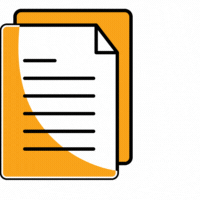Aromaterapi Lemon untuk Mengurangi Mual dan Muntah pada Ibu Hamil
Lemon Aromatherapy to Reduce Nausea and Vomiting in Pregnancy
DOI:
https://doi.org/10.35473/ijm.v7i1.3125Keywords:
Lemon Aromatherapy, Nausea, Vomiting, pregnancyAbstract
The first trimester of pregnancy is when the embryo or fetus is 0–14 weeks old in the body. Nausea and vomiting are natural and common symptoms that occur in the first trimester of pregnancy, often between the 6th and 10th weeks of pregnancy. Nausea usually occurs in the morning, but can also occur at any time, even at night. Lemon aromatherapy contains ingredients that can kill meningococcus and typhoid bacteria, has an antifungal effect, effectively neutralizes unpleasant odors, has anti-anxiety, depressant and stress-relieving effects, and improves and focuses the mind. To find out the differences in nausea and vomiting before and after giving lemon aromatherapy to pregnant women. The research is quantitative research using the Quasi Experiment method with a one group pre-test and post-test design without a control group. The sample used a total sampling of 16 trimester pregnant women. To determine differences in this study, the Wilcoxon test was used because the data was not normally distributed. Testing the normality of the data using the Shapiro-Wilk test showed that the results were not normally distributed. The results of statistical tests using the Wilcoxon test obtained a p value = 0.000 or smaller than the α value (0.05). It was concluded that Ho was rejected, meaning there was a difference in nausea and vomiting between before and after being given lemon aromatepai to pregnant women. Lemon aromatherapy can be used as a treatment that can be used to help reduce nausea and vomiting in pregnant women..
Abstrak
Kehamilan trimester pertama adalah kondisi embrio atau janin berada pada usia 0–14 minggu di dalam tubuh. Mual dan muntah merupakan gejala alami dan umum yang terjadi pada trimester pertama kehamilan seringnya pada usia kehamilan antara minggu ke-6 dan ke-10. Mual biasanya terjadi pada pagi hari, namun dapat juga terjadi kapan saja bahkan pada malam hari. Aromaterapi lemon mengandung bahan yang dapat membunuh bakteri meningokokus dan tifus, memiliki efek antijamur, efektif menetralkan bau tak sedap, memiliki efek anticemas, depresan dan penghilang stres, serta meningkatkan dan memfokuskan pikiran. Untuk mengetahui perbedaan mual muntal sebelum dan sesudah pemberian aromaterapi lemon pada ibu hamil. Penelitian merupakan penelitain kuantitaf dengan metode Quasi Experiment dengan rancangan one group pre-test and post-test design tanpa kelompok kontrol. Sampel menggunakan total sampling sebanyak 16 ibu hamil trimester, Untuk mengetahui perbedaan pada penelitian ini menggunakan Uji wilcoxon dikarenakan data berdistribusi tidak normal. Uji normalitas data dengan uji Shapiro-Wilk didapatkan bahwa hasilnya tidak berdistribusi normal. Hasil uji statistik yang menggunakan uji wilcoxon didapatkan nilai p = 0,000 atau lebih kecil dari nilai α (0,05). Disimpulkan bahwa Ho ditolak artinya terdapat perbedaan mual muntah antara sebelum dengan sesudah diberikan aromatepai lemon pada ibu hamil. Aromaterapi lemon dapat digunakan sebagai salah satu asuhan yang dapat digunakan untuk membantu menurunkan mua muntah pada ibu hamil.
Downloads
References
BR Sebayang, W. (2021). Pengaruh Aromatherapy Terhadap Mual Dan Muntah Pada Ibu Hamil (Systematic Rivew). Jurnal Ilmiah Kebidanan Imelda, 7(2), 65–68. https://doi.org/10.52943/jikebi.v7i2.619.
Buckle, J. (2015). Clinical Aromatherapy Essential Oils in Healthcare (Ed. 3). Chuchill Livingstone.
Damayanti, D., Wardani, R. S., & Indrawati, N. D. (2015). Studi Deskriptif Tingkat Pengetahuan Tentang Ketidaknyamanan Selama Kehamilan Pada Ibu Hamil Trimester Pertama Di Bpm Ny.A Pundenarum Demak. Jurnal Kebidanan, 74–80. https://jurnal.unimus.ac.id/index.php/jur_bid/article/view/1392/1446.
Des Metasari, Diyah Tepi Rahmawati, & Ronalen Situmorang. (2022). Efektivitas Aromaterapi Lavender Dan Lemon Dalam Mengurangi Mual Muntah Pada Ibu Hamil. Jurnal JKFT: Universitas Muhamadiyah Tangerang, 7(2), 88–94.
Dewi, W. S., & Safitri, E. Y. (2018). Pengaruh Aromaterapi Lemon terhadap Emesis Gravidarum di Praktik Mandiri Bidan Wanti Mardiwati. Jurnal Ilmiah Kesehatan, 17(3), 4–8. https://doi.org/10.33221/jikes.v17i3.173.
Kemenkes. RI. (2016). Profil Kesehatan Indonesia Tahun 2016. http://www.kemkes.go.id
Kemenkes RI. (2019). Profil Kesehatan Indonesa 2019. In Kementrian Kesehatan Republik Indonesia. https://pusdatin.kemkes.go.id/resources/download/pusdatin/profil-kesehatan-indonesia/Profil-Kesehatan-indonesia-2019.pdf.
Manuaba, I. B. G. (2016). Ilmu Kebidanan, Penyakit Kandungan & Keluarga Berencana Untuk Pendidikan Bidan (2nd ed.). EGC.
Maternity, D., Ariska, P., & Yulia Sari, D. (2017). Inhalasi Lemon Mengurangi Mual Muntah Pada Ibu Hamil Trimester Satu. Jurnal Ilmiah Bidan, II(3). https://e-journal.ibi.or.id/index.php/jib/article/view/39.
Medforth, J. (2013). Kebidanan Oxford dari Bidan untuk Bidan. EGC.
Mujayati, N., Ariyani, N. W., Ariyani, N. W., Mauliku, J., & Mauliku, J. (2022). Efektivitas Aromaterapi Lemon Pada Penurunan Derajat Emesis Gravidarum Di Praktek Mandiri Bidan. Jurnal Ilmiah Kebidanan (The Journal Of Midwifery), 10(1), 73–79. https://doi.org/10.33992/jik.v10i1.1635.
Rofi’ah, S., Widatiningsih, S., & Arfiana, A. (2019). Studi Fenomenologi Kejadian Hiperemesis Gravidarum Pada Ibu Hamil Trimester I. Jurnal Riset Kesehatan, 8(1), 41. https://doi.org/10.31983/jrk.v8i1.3844.
Yanti, P. D. (2022). Hubungan Pengetahuan, Sikap Ibu Dengan Bendungan ASi di Puskesmas Sidomulyo Pekanbaru Tahun 2016. Jurnal Endurance, 2(1), 81–89. https://doi.org/10.22216/jen.v2i1.1023.
Yavari kia, P., Safajou, F., Shahnazi, M., & Nazemiyeh, H. (2014). The Effect of Lemon Inhalation Aromatherapy on Nausea and Vomiting of Pregnancy: A Double-Blinded, Randomized, Controlled Clinical Trial. Iranian Red Crescent Medical Journal, 16(3). https://doi.org/10.5812/ircmj.14360
Downloads
Published
How to Cite
Issue
Section
License
Copyright notice:
- Authors retain copyright and grant the journal right of first publication with the work simultaneously licensed under a Creative Commons Attribution License that allows others to share the work with an acknowledgement of the work's authorship and initial publication in this journal.
- Authors are able to enter into separate, additional contractual arrangements for the non-exclusive distribution of the journal's published version of the work (e.g., post it to an institutional repository or publish it in a book), with an acknowledgement of its initial publication in this journal.


